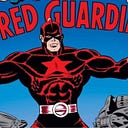Member-only story
White Slaves, Black Slaveholders, and the Metaphor of Slavery
1: White Slaves
I always thought “free, white, and twenty-one” was racist and redundant. Turns out it’s just racist. In the Old South, some slaves were legally white.
Whiteness and slavery had different rules. Slaves were people whose mothers were slaves. White people included people who were either 3/4 white (a quadroon) or 7/8 white (an octoroon), depending on the state’s legal definition. That fact should show anyone that race is a social construct—quadroons could step across a state line and change their race. (The one-drop rule, which made you black if you had any African ancestors, was created half a century after the Civil War. The first state to impose the one-drop rule was Tennessee in 1910.)
Being legally white did not free a slave. Only an owner could free a slave. Perhaps the most famous quadroon slave is Sally Hemings, who belonged to Thomas Jefferson and was freed after his death.
Abolitionists used white slaves to help their audiences see that slaves could be members of their own families. In Uncle Tom’s Cabin, Harriet Beecher Stowe’s Eliza is a quadroon slave. Eliza was a plausible character because fictional white slaves were based on real ones:
Nonfiction accounts written by escaped mixed-race slaves who used their…
